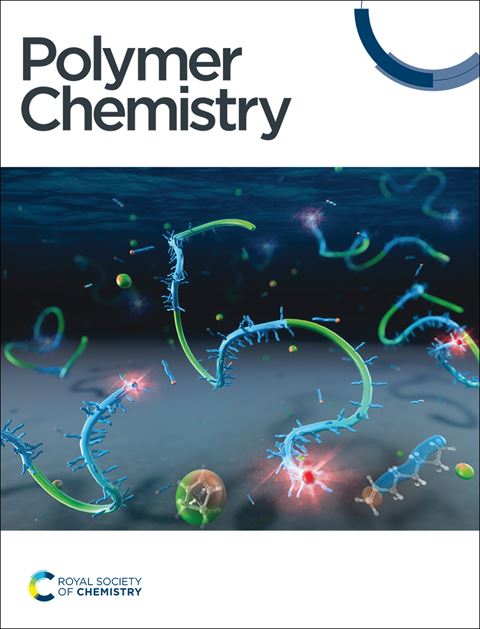Corona-shaped two-dimensional polyaramid derivatives for poly(ethylene oxide)-based all-solid-state lithium batteries
IF 4.1
2区 化学
Q2 POLYMER SCIENCE
引用次数: 0
Abstract
Solid polymer electrolytes (SPEs), especially those based on poly(ethylene oxide) (PEO), have garnered significant attention in the field of all-solid-state lithium batteries due to their high processability and low cost, advantages that are typically hard to achieve with their inorganic counterparts. However, the poor ionic conductivities have retarded their further applications in all-solid-state lithium batteries. Herein, we report a series of corona-shaped two-dimensional polyaramid (2DPA) derivatives that improve the overall performance of PEO-based SPE, including ionic conductivity, ion transference number, and electrochemical stability. We demonstrate that the unique corona topology, consisting of a rigid two-dimensional polyaramid core and flexible poly(ethylene glycol) (PEG) chains grafted at its periphery, effectively inhibits the crystallization of the PEO matrix through chain entanglement, thus enhancing the ionic conductivity. Furthermore, the 2D polyaramide core provides enriched Lewis acidic binding sites for counter anions, suppressing the anion motion and resulting in selective lithium ion transport. Therefore, a blend of 30% 2DPA-PEGs and PEO exhibits enhanced room temperature ionic conductivity up to 4.39 × 10-5 S cm-1 (an order of magnitude higher than the original SPE), an elevated lithium-ion transference number of 0.78, and a high oxidation voltage of 4.7 V (vs Li/Li+). Meanwhile, the assembled all-solid-state batteries exhibit improved cycle performance and higher stability. Such a heterostructural polymer design strategy showcases the promising potential of novel 2D polymer derivatives in ion transport optimization in SPEs.用于聚环氧乙烷全固态锂电池的日冕形二维聚芳纶衍生物
本文章由计算机程序翻译,如有差异,请以英文原文为准。
求助全文
约1分钟内获得全文
求助全文
来源期刊

Polymer Chemistry
POLYMER SCIENCE-
CiteScore
8.60
自引率
8.70%
发文量
535
审稿时长
1.7 months
期刊介绍:
Polymer Chemistry welcomes submissions in all areas of polymer science that have a strong focus on macromolecular chemistry. Manuscripts may cover a broad range of fields, yet no direct application focus is required.
 求助内容:
求助内容: 应助结果提醒方式:
应助结果提醒方式:


